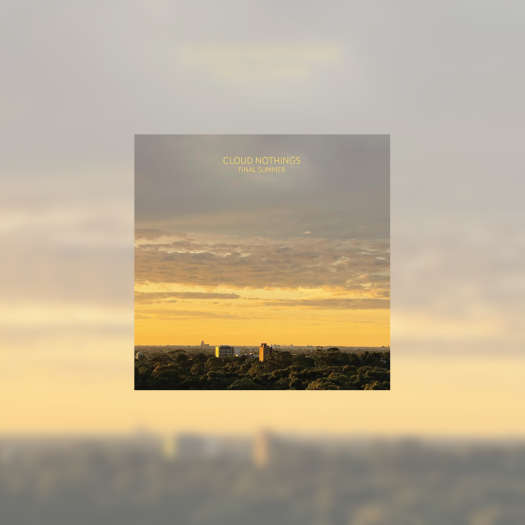As countless aggressive bands both in the underground and above it continue to combine disparate elements of "metal" in an attempt to disprove the "there's nothing new under the sun" theory of musical evolution, metal as a defining term has become increasingly all-encompassing and vague. While almost any music with loud, abrasive guitars and screamed vocals can be considered metal, the number of bands, genres and sub-genres it has spawned makes it too broad to accurately describe the myriad sounds stained by its brush. Metal constantly fragments and creates new definitions, categories and genres. But because of its root influence and impact on all aggressive music, it remains indelibly connected with all its tributaries.
Sludge
Often considered a reaction against the speed of '80s thrash metal, sludge evolved from a melding of doom's slow down-tuned molasses heaviness and hardcore punk's vitriolic nihilism. Sludge combines the abrasion and animosity (and occasionally tempos) of its noisy '80s hardcore punk roots, with Black Sabbath-spawned plodding doom metal, repetitious riffs and structures, painfully misanthropic and self-hating lyrics, feedback-drenched squeals and squalls. However, coupled with its tortured vocals, malicious playing, an often violent live demeanour and noise for its own sake, sludgecore's musical hostility and self-abuse as rhetoric remains one of the most threatening shades of metal.
Prime movers: Eyehategod Take As Needed For Pain (Century Media, 1993); Buzzov*en Sore (Roadrunner, 1994); -16- Drop Out (Pessimiser/Theologian, 1996); Iron Monkey Our Problem (Earache, 1998); Cavity On The Lam (Hydra Head, 2002)

Goregrind
An offshoot of the grindcore/death metal movement popularised in the late '80s and early '90s, goregrind's pedigree can be traced to one of the movement's founding fathers, Carcass. Goregrind combines over-the-top horror, gore or "medical text gone horribly wrong"-inspired lyrics and imagery, vocals that are often shrieked or delivered as pitch-shifted demonic gurgles, down-tuned riffs, grindcore tempos and a delivery that veers towards the loose and sloppy, sacrificing technical perfection for a more brutal sound. However, goregrind's defining attributes, which have been continually pushed to even sicker and more depraved levels, remains its repulsive lyrical content and imagery, grind/death influences, erratic playing and sub-harmonic vocals.
Prime movers: Carcass Symphonies of Sickness (Earache, 1989); Repulsion Horrified (Earache 1989; Relapse 1993); Impetigo Horror of the Zombies (Wild Rags, 1992); Regurgitate Effortless Regurgitation of Bright Red Blood (Lowland, 1994); Gut The Singles Collection (Deliria, 2000)

Power-violence
Formed out of a melding of chaotic hardcore/punk aesthetics, grindcore's unrelenting tempos and energy, and feedback-soaked metallic noise influences, power-violence has evolved to incorporate newer metal and hardcore influences. However, its defining attributes of jackhammer speed coupled with an emphasis on a more manic and emotional delivery, an adherence to underground political and social ideologies, biting misanthropy (lyrically) and short song structures focusing on abrasion and brevity remains constant. High-pitched barked/screamed vocals are preferred over the lower pitch growls of grindcore, with musical precision and execution often sacrificed for a manic, confrontational delivery.
Prime movers: Crossed Out Crossed Out seven-inch (Slap A Ham, 1991); Man Is The Bastard Sum of the Men (Vermiform, 1991); Spazz La Revancha (Sound Pollution, 1997); Reversal of Man Revolution Summer (Independence Day/Schematics, 1998); Combat Wounded Veteran I Know A Girl Who Develops Crime Scene Photos (No Idea, 1999)

Tech/Complicatedcore
Tracing its lineage back to innovators such as Rorschach, Human Remains, Deadguy, Converge, Coalesce, Turmoil and Kiss It Goodbye, among other acts who grew tired of '90s metallic hardcore's staid mosh-metal formula, the tech/complicatedcore sub-genre is a relatively young but flourishing offshoot of metallic hardcore. Focusing on combining musical extremity through proficiency and unbridled aggression, tech/complicatedcore is redefining the envelope of metallic hardcore by incorporating technical thrash with progressive death metal influences. It places an increased importance on utilising avant influences such as noise and jazz, impossible time signatures, chaotic/psychotic freak-out/breakdown parts, frantic stop-start segments, grindcore runs, unorthodox, dissonant riffing and previously unrealised musical proficiency to challenge and confront.
Prime movers: Candiria Beyond Reasonable Doubt (MIA, 1997); Dillinger Escape Plan Calculating Infinity (Relapse, 1999); As the Sun Sets Each Individual Voice Is Dead In The Silence (Moment of Clarity/Trashart, 2000); All Else Failed Archetype (Now or Never, 2001); the End Transfer Trachea Reverberations From Point: False Omniscient (Re-define, 2001)

Sludge
Often considered a reaction against the speed of '80s thrash metal, sludge evolved from a melding of doom's slow down-tuned molasses heaviness and hardcore punk's vitriolic nihilism. Sludge combines the abrasion and animosity (and occasionally tempos) of its noisy '80s hardcore punk roots, with Black Sabbath-spawned plodding doom metal, repetitious riffs and structures, painfully misanthropic and self-hating lyrics, feedback-drenched squeals and squalls. However, coupled with its tortured vocals, malicious playing, an often violent live demeanour and noise for its own sake, sludgecore's musical hostility and self-abuse as rhetoric remains one of the most threatening shades of metal.
Prime movers: Eyehategod Take As Needed For Pain (Century Media, 1993); Buzzov*en Sore (Roadrunner, 1994); -16- Drop Out (Pessimiser/Theologian, 1996); Iron Monkey Our Problem (Earache, 1998); Cavity On The Lam (Hydra Head, 2002)

Goregrind
An offshoot of the grindcore/death metal movement popularised in the late '80s and early '90s, goregrind's pedigree can be traced to one of the movement's founding fathers, Carcass. Goregrind combines over-the-top horror, gore or "medical text gone horribly wrong"-inspired lyrics and imagery, vocals that are often shrieked or delivered as pitch-shifted demonic gurgles, down-tuned riffs, grindcore tempos and a delivery that veers towards the loose and sloppy, sacrificing technical perfection for a more brutal sound. However, goregrind's defining attributes, which have been continually pushed to even sicker and more depraved levels, remains its repulsive lyrical content and imagery, grind/death influences, erratic playing and sub-harmonic vocals.
Prime movers: Carcass Symphonies of Sickness (Earache, 1989); Repulsion Horrified (Earache 1989; Relapse 1993); Impetigo Horror of the Zombies (Wild Rags, 1992); Regurgitate Effortless Regurgitation of Bright Red Blood (Lowland, 1994); Gut The Singles Collection (Deliria, 2000)

Power-violence
Formed out of a melding of chaotic hardcore/punk aesthetics, grindcore's unrelenting tempos and energy, and feedback-soaked metallic noise influences, power-violence has evolved to incorporate newer metal and hardcore influences. However, its defining attributes of jackhammer speed coupled with an emphasis on a more manic and emotional delivery, an adherence to underground political and social ideologies, biting misanthropy (lyrically) and short song structures focusing on abrasion and brevity remains constant. High-pitched barked/screamed vocals are preferred over the lower pitch growls of grindcore, with musical precision and execution often sacrificed for a manic, confrontational delivery.
Prime movers: Crossed Out Crossed Out seven-inch (Slap A Ham, 1991); Man Is The Bastard Sum of the Men (Vermiform, 1991); Spazz La Revancha (Sound Pollution, 1997); Reversal of Man Revolution Summer (Independence Day/Schematics, 1998); Combat Wounded Veteran I Know A Girl Who Develops Crime Scene Photos (No Idea, 1999)

Tech/Complicatedcore
Tracing its lineage back to innovators such as Rorschach, Human Remains, Deadguy, Converge, Coalesce, Turmoil and Kiss It Goodbye, among other acts who grew tired of '90s metallic hardcore's staid mosh-metal formula, the tech/complicatedcore sub-genre is a relatively young but flourishing offshoot of metallic hardcore. Focusing on combining musical extremity through proficiency and unbridled aggression, tech/complicatedcore is redefining the envelope of metallic hardcore by incorporating technical thrash with progressive death metal influences. It places an increased importance on utilising avant influences such as noise and jazz, impossible time signatures, chaotic/psychotic freak-out/breakdown parts, frantic stop-start segments, grindcore runs, unorthodox, dissonant riffing and previously unrealised musical proficiency to challenge and confront.
Prime movers: Candiria Beyond Reasonable Doubt (MIA, 1997); Dillinger Escape Plan Calculating Infinity (Relapse, 1999); As the Sun Sets Each Individual Voice Is Dead In The Silence (Moment of Clarity/Trashart, 2000); All Else Failed Archetype (Now or Never, 2001); the End Transfer Trachea Reverberations From Point: False Omniscient (Re-define, 2001)





